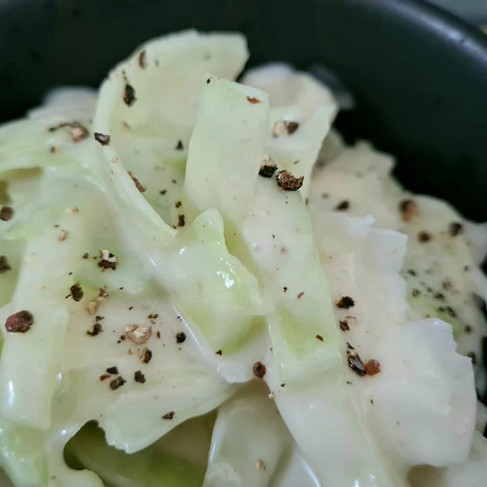Britemesse or Kåldagen & a Traditional Recipe
- Fiona McKinna
- Oct 7, 2021
- 3 min read
Updated: Jun 27, 2022

As the we are striding past autumn and towards winter in Scandinavia there seem to be more and more days marked on the primstav (ancient runic calendar). Many of them carry double significance; feast days to commemorate special saints, but also days that are marked by a harvest or time that holds meaning for farming and nature.
Saint Birgitta was a Swedish saint who was canonised in 1391. Birgitta was born to an aristocratic family in Uppsala in Sweden in 1303 and spent all her life dedicated to Christianity, taking many pilgrimages including the long and arduous route to Santiago de Compostela in Spain. But after a man died at Alvastra Monastery in 1344 she gave up all her earthly belongings and began to hear revelations from God. They weren't deeply learned revelations, but practical and down to earth things often about society and the church itself.

As her revelations became more widely known they were noted down by scholars and in 1345 a new monastic order was dedicated to her with enormous Norwegian taxes poured into it and the monastery Vadstena Castle.
After yet more revelations, Birgitta embarked on a pilgrimage to the Holy Land where she received even more revelations. Some of these are still significant today as they influence the way Christ's birth is portrayed in art. Sadly Birgitta died just after returning to Rome and her body was transferred to Sweden, a journey that took 7 months.

Britemesse is marked on almost all the primstavs. Often it's marked with a book or a house.
So how do we get to Kåldagen, I hear you ask? This time at the beginning of October is the traditional time for the harvesting of the cabbages and so Britemesse is more commonly known as Kåldagen (Cabbage Day).

There's a dish that quietly appears on Norwegian tables at this time of year. You'll find it as an accompaniment to hot dishes from restaurants to buffets and everyday meals. It doesn't arrive with any fanfare or special day which is a shame because its a delicious comfort food. Kålstuing is a very traditional dish, but wonderful in it's simplicity. It's simply shredded, blanched cabbage in a white sauce made with some of the cooking water from the cabbage. Served like this the cabbage becomes creamy and loses that "cabbagey" flavour that many people find too strong. Traditionally it is served with meatballs and mashed potato, but it goes so well with many other hot dishes.
Kålstuing. Serves 4 people
Ingredients
500g / 1 lb 2 oz cabbage. The hard white cabbage is the best for this dish
50g / 2 oz butter
50G / 2 oz flour
300ml / 10 fl oz pf the water from cooking the cabbage
200ml / 7 fl oz milk
1/4 teaspoon grated nutmeg
salt
pepper
Method
Shred the cabbage and cook in boiling salted water for a few minutes until tender but not soggy. Drain and keep some of the cooking liquid to make the sauce.
While the cabbage is draining we need to make the sauce. In a large pan, melt the butter and stir in the flour. Gradually add the milk and cooking water from the cabbage. Bring to the boil and simmer for 2 minutes, stirring from time to time. Add the nutmeg and season with salt and black pepper. Stir in the cabbage and serve.
Vær så god!
If you liked this post and want to learn more about Nordic living, you might our Facebook Group, Living a Nordic Life. We'd be very happy to see you there!
.png)




Comments